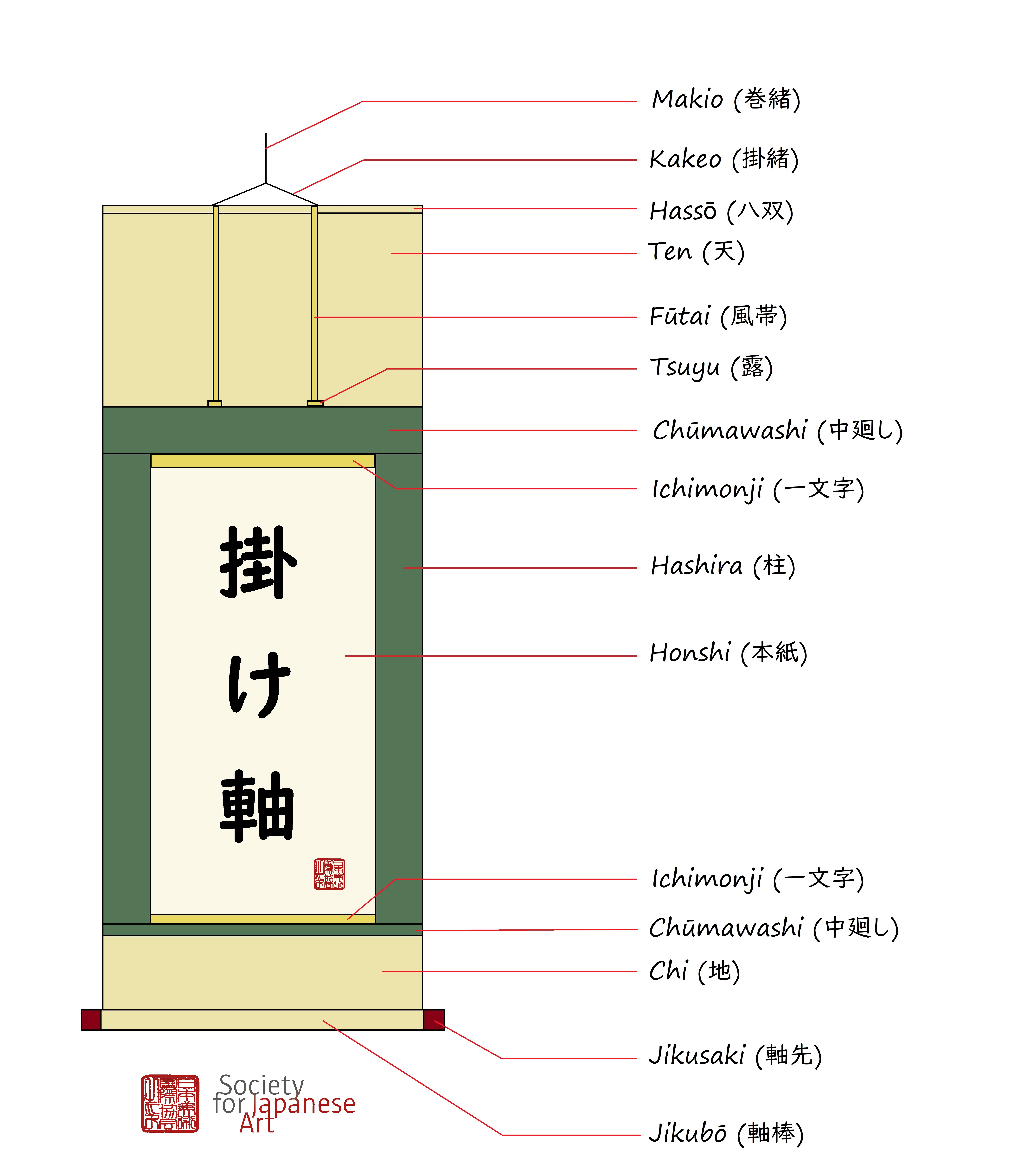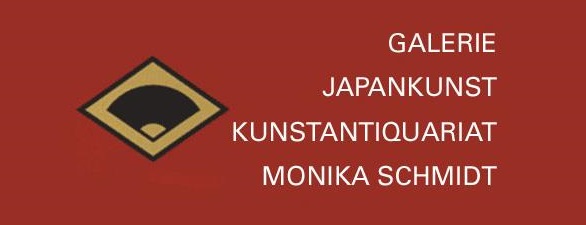
A tokonoma in a preserved Edo period inn (honjin) in the Kisokaidō post town Magome, Nagano Prefecture.
Hanging scrolls (kakemono)
The hanging scroll, in Japanese known as kakemono (“hanging thing”) or kakejiku (“hanging roller”), is the most common mounting for Japanese paintings and calligraphy. Hanging scrolls decorate the walls of both traditional and modern Japanese households, but the most important place where they are hung is the tokonoma. Usually situated in the main room of a traditional Japanese house, the tokonoma is an elevated alcove where a hanging scroll is displayed, often along with a flower arrangement piece (ikebana). Its function is decorative—it is meant to set the ambience of the space. Unlike the Western painting in a frame, which is usually not moved from the wall for many years, the hanging scroll and other decorations displayed within the tokonoma are temporary: they are alternated every season, but may also be switched out on special occasions, such as a tea ceremony. For example, during spring one may decorate their space with a painting of a cherry blossom branch, but in autumn a landscape with red maple trees would be more fitting. Because hanging scrolls are frequently switched around, every scroll comes with a custom-made wooden storage box. These boxes often bear the artist’s signature and seal, and other inscriptions such as the title of the work. (Collectors beware, the value of a painting may decrease if the original box is lost!)

Schematic overview of a hanging scroll. Each part of the mounting has a unique name.
Because the mounting is usually considered to be secondary to the main work (honshi), paintings are rarely illustrated as complete scrolls in catalogues and articles – rather, only the painting (or calligraphy) is shown. While the main work is done by the artist on paper or silk, a separate (usually anonymous) craftsman is responsible for creating the hanging scroll mounting, specially made for each painting. The mounting consists of various parts, each with unique names (see image). Excluding the weighted bar at the bottom (jikubō), the mounting is completely made of cloth, for easy rolling. The cloth used for the mounting differs in quality, depending on its proximity to the painting: the far ends of the scroll, ten (“heaven”) and chi (“earth”), are the lowest in quality; the chūmawashi (“middle belt”) and hashira (“pillar”) are higher in quality, often with a decorative pattern; and the ichimonji are made with high quality brocade. Matching with the ichimonji are two decorative strips of the same high-quality brocade that hang down from the top, known as fūtai. To store a hanging scroll, it must be tightly rolled around the weighted bar in order to fit in the box. While the type of mounting shown here is the most common, variations exist, such as mountings without the layer of chūmawashi or mountings with the high-quality brocade also placed beside the main work.
Want to read more about Japanese paintings?
If you're a member, you can browse the Andon collection or read the following articles we selected for you:
Want to continue reading?
Become a member
Individual or institute*
2 x Andon per year
Access to the online Andon Collection
Access to SJA activities and news
Access to a world wide network
*€85 outside the Netherlands€75 / €85 per year
Partner membership*
Access to the online Andon Collection
Access to SJA activities and news
Access to a world wide network
* It is required that the partner lives at the same address.€25 per year
Student membership*
2 x Andon per year
Access to the online Andon Collection
Access to SJA activities and news
Access to a world wide network
* A scan of a recent student ID is required.€40 per year
Already a member?
Login








